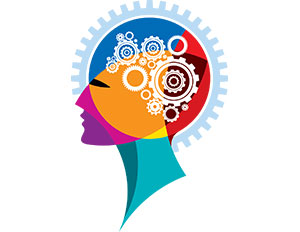Unlocking business growth: How AI and Machine Learning transform data into decisions
The digital century’s new oil is data, which is driving industries and companies. However, Strategic decisions cannot be made solely from raw data; it needs to be synthesised first to become useful. Thanks to AI and ML, breakthroughs in the interpretation of data have revolutionised decision-making processes in businesses for better, faster, and more precise decisions. Let us see how can be used businesses are using ML and AI to transform data into insights.
The Function of AI and ML in Business Decision Making:
Organisations across diverse sectors harness the power of AI and ML as strategic instruments in their quest to secure a competitive edge. Such technique involve process the data amounts, spotting patterns, and generating predictive insights that help business decisions. Some of the transformation that AI and ML are bringing about across industries:
Improving Customer Experience
Companies can improve customer need and personalise interactions with the use of AI chatbots, recommendation engines, and sentiment analysis tools. Predicting the customer needs and offering tailor-made solutions is made possible by analysing their previous engagement of behavior making and loyalty soar.
Example: Netflix utilizes AI-based recommendation algorithms to suggest movies and TV shows based on users’ viewing habits. Machine learning algorithms, employed by Amazon, carry out the same task of making product recommendations which in turn boosts sales while enhancing user experience. Another instance includes the use of AI by Starbucks to give offers to customers based on their location and using the past purchases for giving offers.
2. Predictive Analytics for Market Trends
Machine learning algorithms enable businesses to analyze past data and detect emerging market trends. Retailers use AI technology to predict demand and adjust prices quickly while optimising product stock levels.
Example: Walmart use AI-driven analytics to control efficiently its extensive inventory by keeping less popular items in check and ensuring popular products stay well-stocked in the store. This make lower expenses and boosts productivity and profit. H&M uses artificial intelligence to predict fashion style, user demand and stock merchandise that will likely sell in specific locations.
3. Fraud Detection and Risk Management
Banks and financial institutions use AI-powered fraud detection systems to identify suspicious transactions and minimise risks to save users money.
In financial crimes, ML algorithms check transaction patterns to detect irregularities and stop financial crimes.
Example: PayPal use Artificial intelligence algorithms to help immediately check the difference between genuine transactions and fraud transactions. The method protects clients and businesses from financial harm by reducing the risk of fraud activities. Mastercard uses its AI Decision Intelligence engine to reduce incorrect transaction declines while helping banks and merchants detect fraud activities with any user.
4. Operational Efficiency and Automation
AI automation systems enable streamlined workflows and productivity growth with fewer human mistakes. Business operations become more efficient and cost-effective through the implementation of supply chain optimization and automated customer support systems.
Example: Tesla manufacturing plants incorporate AI controlled robots are used to boost both efficiency and speed in production unit. The company uses AI robots to enhance its self driving technology by processing and use the real world driving data for continuous learning. FedEx and UPS deploy AI based route optimisation systems in their logistics operations to reduce fuel consumption and deliver goods on time with low cost.
5 Healthcare Use Data Driven Decision Making
The healthcare sector has also been using AI and ML for disease treatment and forecasting. Predictive analytics is also being used in this sector for patient results. In the health care industry, the diagnostics system also powered by AI and transforming the care of patients by making it more accurate and swifter.
Example: IBM Watson Health applies artificial intelligence in supporting doctors to diagnose diseases and propose treatments. Analyzing medical records together with research papers, shall insightfully generate information that can aid healthcare practitioners in making quality decisions. Just as the other instance of AI use is found in Google’s DeepMind, which identified diseases of the eye from scans with equal accuracy as that o human specialists.
The Challenges and Ethical Considerations that Come with Implementing AI and ML.
Despite their advantages, AI and ML adoption present several challenges. Businesses must address the following concerns to ensure responsible AI implementation:
1. Data Privacy and Security
When large amounts of data are being processed using AI and ML, businesses need to secure all user sensitive information to make user safe. Following data protection regulations such as GDPR and CCPA is necessary to avoid legal complications.
Example: Social media Facebook has faced a review of data privacy issues, highlighting the importance of hard data protection policies in AI driven businesses. Apple has placed emphasis on user privacy by integrating AI models that run on devices instead of the cloud to minimise data exposure.
2. Bias and Fairness in AI Models
AI systems can derive biases from the data they are trained on. Companies must ensure that their models are free from partiality, especially in new hiring processes, financial lending and law enforcement applications.
Example: A study found that some AI used hiring tools favoured male candidates over female candidates due to biases used in training data. To address this, companies like LinkedIn have implemented AI-based fair hiring tools that ensure job recommendations are free from bias and companies find the best matched employee.
3. Integration with Existing Systems
Many businesses face problems in integrating AI and ML solutions with their existing infrastructure. For seamless implementation, it is crucial to have proper planning and invest in AI-compatible technology stacks.
Example: Companies like Siemens and GE have successfully integrated AI into their industrial processes through digital twins, virtual representations of physical assets that help performance optimize in real time.
4. Human Oversight and Accountability
AI should not replace human decision-making completely. Companies must establish guidelines for human guidance, make sure that AI-driven decisions align with ethical and business values.
Example: The Aviation industry, AI assists pilots in making data driven flight decisions, but human pilots still maintain control to ensure safety. Similarly, in the legal field AI powered research tools help the lawyers to find relevant case law and save time and effort, but the final legal decisions still in the human hands because AI have note emotions.
The Future of AI and ML in Business
We know AI and ML continue to develop their applications for the business, decision making will become even more accurate and refined. Companies investing in AI-driven solutions today and setting themselves up for long term success with AI, staying ahead of the curve in a completely data-driven world.
Emerging Trends in AI and ML
AI Powered Hyper Personalisation: Businesses will develop many personalisation techniques and offer the best experiences in marketing, customer service, and product recommendations to users.
Example: Spotify uses the AI to personalise and suggest the public playlists based on a user’s listening habits, search history and preferences.
AI-Driven Decision Support Systems:
AI-powered analytics tools will provide businesses with deeper insights and help executives to make more informed strategic decisions for improvement in business.
Example: Google Analytics uses AI to help businesses understand customer behaviour and optimise their marketing efforts to help the user for best results.
IoT plus AI:
Joining of AI and IoT in work gives chance for immediate data checks and shows able fixing before problems happen in fields like making and moving goods helping to keep cash, time, and materials.
Example: Many modern plants such as those managed by Siemens employ AI along with IoT to foresee tool breakages lowering idle time saving time and money making items more dependable.
Advancements in Natural Language Processing (NLP):
AI driven NLP technologies will improve human interaction with machines, making chatbots and virtual assistants more effective in solving the problems with the help of AI.
Example: OpenAI’s ChatGPT and Google’s Bard are revolutionising how businesses interact with customers through AI-driven conversation models, which also help users to finish the work fast and save the effort and time.
Conclusion
AI and ML are converting businesses by enabling them to convert raw data into strategic insights for businesses, also enhancing customer experiences to optimising operations and better understanding, These technologies are shaping the future of decision making, the way for smarter and more accomplished businesses for high growth and profit.
As businesses continue to invest in AI and ML, they must also focus on moral attentions, data privacy, and human AI collaboration to get the best results. The future belongs to those who adopt data driven innovation while maintaining transparency and accountability in their business.



